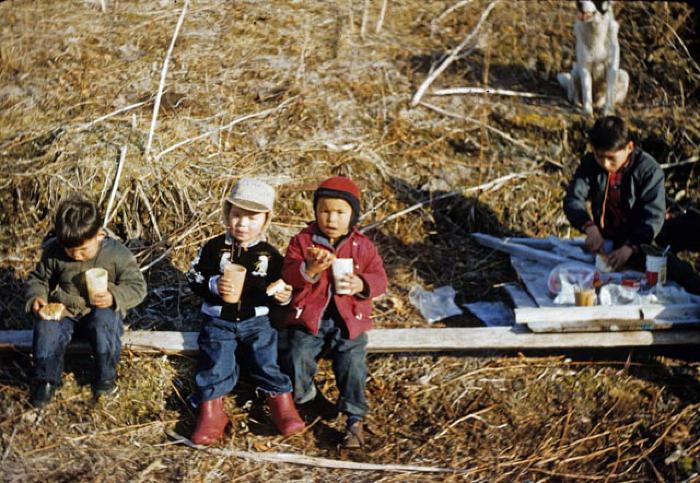Bread — Gleipaq (N), Lliipaq (S), Gliipaq

Bread came to Kodiak with Russian traders, who imported flour and knowledge of baking. Yet baked goods appear to have been a luxury item in the early historic era. Historic accounts suggest that bread was in short supply, due to limited quantities of flour. Russian attempts to grow wheat and rye in Kodiak’s wet climate were unsuccessful, although oats and barley thrived. At Fort Ross, a Russian settlement in Northern California, colonists worked to grow and mill grain to supply flour to Alaska settlements. Even this proved difficult. Weeds, fog, and limited knowledge of farming techniques resulted in poor yields.
Bread seems to have become a staple of the Alutiiq diet in the late nineteenth century, and bread baking became a common household task. Alutiiq Elders remember baking all of the bread used by their families, a job that took many hours. One Elder reports that her large family ate eight to ten loaves a week, and baking was a large part of two days every week. Because houses were unheated, women worried about keeping the yeast in their rising dough from dying overnight. One Elder reports that she commonly wrapped the dough bowl with blankets to protect it from the chilly air. Some families baked their bread in coffee cans or butter tins; others used bread pans or employed large cake pans to make three loaves at once.
A favorite way to eat bread was with sweet gravy. To a roux of butter and flour, women added milk and sugar. This made a thick, sweet sauce, which people spooned over slices of fresh-baked bread. However, people rarely made sandwiches, because it was considered a waste of bread.
